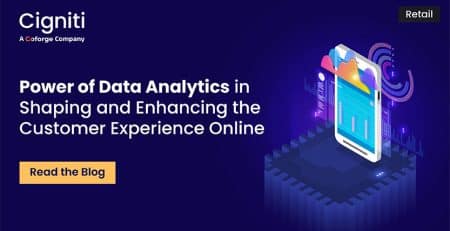The Truth About the AR Disruption in Retail
Mankind is an unpredictable species – visionary but confused about the end goal, innovative but apprehensive to change, evolving digitally but demands personalization, needs an escape from reality but also wants to stay close to it. If you take a good look at the developments happening in each sector, this indecisiveness becomes clearer with mankind oscillating like a pendulum from one end to another. Or, probably the indecisiveness is due to the inherent greediness which compels tech gurus to invent continuously and rapidly.
Whatever advancements have seen light of the day in the past few decades, technological or otherwise, caused maximum commotion in one industry more than any other – Retail. With introduction of big box giants likes Walmart, individual stores were forced to either merge with the invaders or get pushed out of the picture entirely. Advent of ecommerce further took the toll on small-time retailers and resulted in a drop of their sales, making online presence inevitable. There were still shoppers who preferred physical stores over online ones, which is evident from just 11.2% ecommerce sales out of the total retail sales in the last quarter of 2018. Now, to bridge this gap between online and offline shopping, retailers are taking one step forward into modernization with Augmented Reality (AR).
Consumers today value in-store experience more than anything, which subsequently translates into brand loyalty. Businesses are also concentrating on yielding utmost user satisfaction by creating a seamless experience for their customers. AR equips them to manufacture great experience within their product or service offerings. Google Insights revealed that about 61% consumers will prefer to shop in the stores that offer AR. As per Michael Valdsgaard, “A pioneer of digital transformation at Inter IKEA systems, smartphones will disappear within the next 10 years and everything will be available everywhere at all times through voice and visual interfaces, with no keyboards involved.” All of us might as well have our very own J.A.R.V.I.S. It may seem too far-fetched at the moment, but so did a telephone at some point of time.
AR is no longer a distant dream. It is already penetrating the retail gateways and transforming user experiences. IKEA set the precedent years ago and now everyone is finally following suit. By analyzing the AR evolution over the past decades and expected trends in the years to come, let us try to understand how real the augmented retail reality is.
The cash in-flow for AR in retail
As per a report, the augmented reality market is expected to reach $7951.2 Million by 2023 at a CAGR of 47.1%. Apple’s ARKit, Google’s ARCore, and Snap’s Lens Studio are all narrating a winning story for AR, more so in retail sector. As industry giants are realizing AR’s true potential, the investments are on a rise.
Only a few months ago, Alibaba acquired InfinityAR, a start-up that provides an OS which has the capability to convert any device into a powerful content augmentation platform. More AR-centered M&As such as Metaio by Apple, Oculus by Facebook, and Magic Leap by Google further proves the strengthening grasp of augmented reality in retail.
Let’s talk business – What AR has to offer?
Succinctly put – higher revenues, happy customers.
Augmented reality platforms allow buyers to superimpose a product in an actual physical setting, giving them a precise idea about its look and feel. This instills confidence among the users about their purchase and significantly helps in reducing the return rates. IKEA was prompted to develop an AR app when it realized that 14% of its clients bought a wrong sized furniture in the past.
The widespread digital transformation has created the belief that print media is counting its last days. AR is becoming the magic potion that rejuvenates it to life. An AR-driven, interactive, immersive print campaign provides a window to access relevant, boundless content that is free from the space limit of a paper. Such content delivery platform allows retailers to explore the possibilities of market their product at a whole new level, while establishing a favorable brand image. The Italian scooter brand, Vespa, leverages AR benefits to provide its customers with the option of customizing their own scooter by a simple scan of a magazine ad.
By lifting language barriers through real-time translation, enhancing customer engagement, and improving user experience, Augmented reality is on its way to become the mainstream way of shopping.
AR testing – the key to delivering value
Connected packaging was a revolutionary concept that digitalized content and facilitated intelligent user personalization. By creating an interactive marketing channel, connected packaging is futuristic and streamlined purchase-related decision-making for consumers. By scanning the barcodes or QR codes on a given commodity, consumers can explore the manufacturing details, compare it with related products, analyze user reviews and make an informed decision.
In-store AR technology fast-tracks purchases by offering a quick overview of what’s where. With cashier-less payment processing, AR saves time and hassle of waiting in a queue. Augmented reality in retail takes mobile purchases to the next level, uses demand forecast technologies for better inventory management and update digital shelves.
In order to truly achieve what is projected, each node and every element of the entire chain has to be flawless. Connected sensors and beacons are required to operate in an unobstructed manner to avoid any breaks in the service delivery channel. The location-based services employed along with IoT and AI technologies should work precisely as any deviation may distort the accuracy of results.
Software testing augmented reality in retail is indispensable and should be approached with a pre-determined strategy. Assuring quality of involved components will ultimately decide the extent to which the reality is properly augmented. A poorly developed AR system will only degrade the brand image and project a messed-up image of the retailers. As major significance is pressed on the user experience, retailers have to take testing and QA very seriously.
Cigniti assists retailers (individual as well as large chain retail) in assuring quality across their enterprise applications, leveraging Cigniti’s IP BlueSwan while minimizing the costs and risks. Cigniti’s end-to-end testing processes for retail industry help you in supporting your initiatives of enterprise re-platform/upgrade/migration/set-up of complex integration between latest CRM, OMS, WMS, Cloud, Mobile, and Web Applications.





Leave a Reply